Interplanting is one of the best things you can learn to get the most out of your garden space.
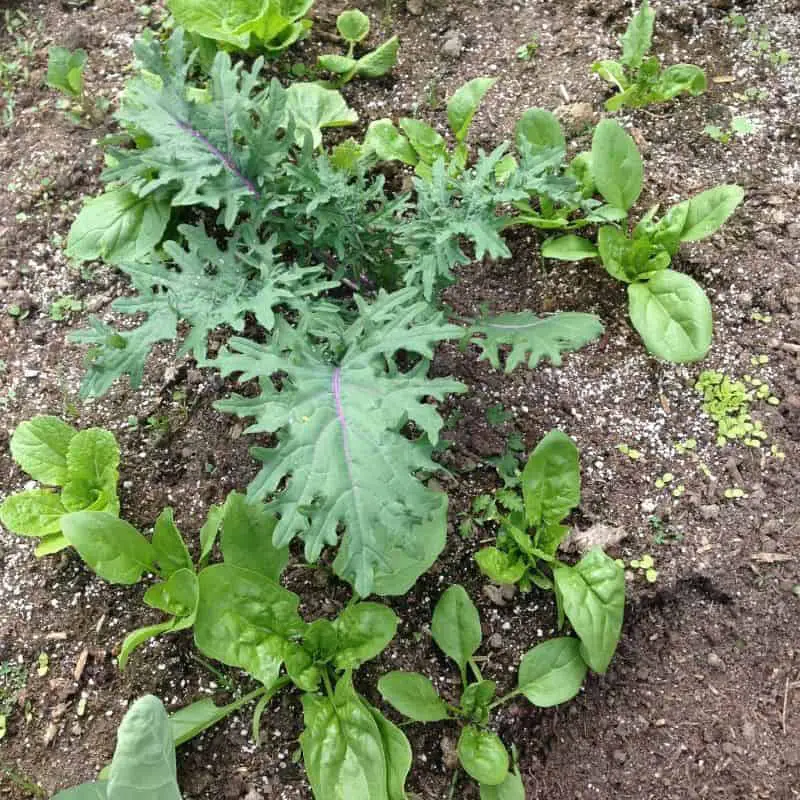
What is Interplanting?
Essentially, inter-planting is making the best use of your garden space by growing crops close together based from when they need to be harvested.
Interplanting is growing fast crops in between or around your larger plants that can be harvested within 1-2 months.
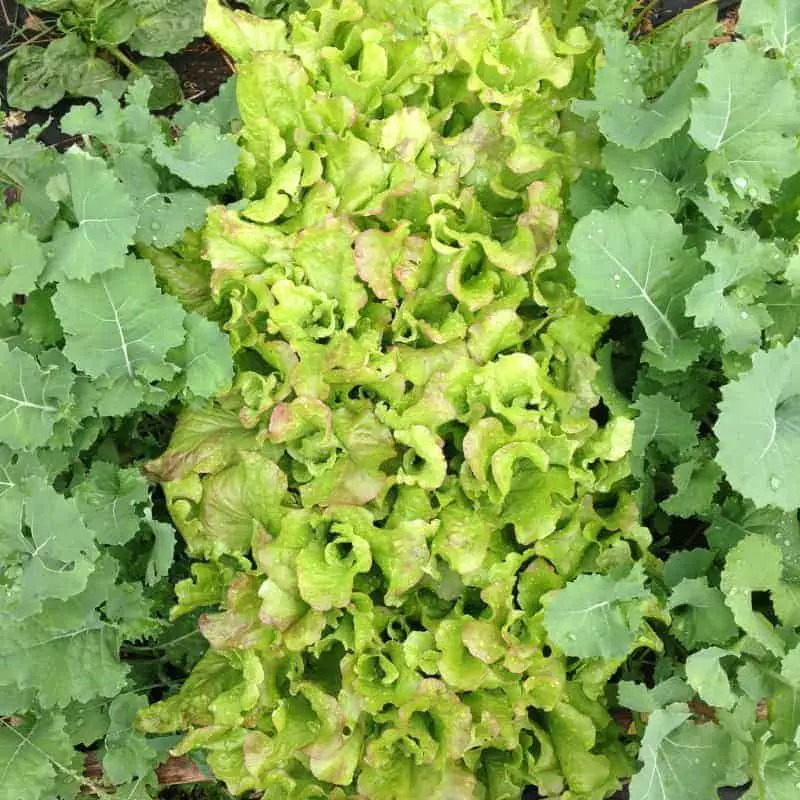
Because some crops are large and need more root space you grow the fast or shallow rooted veggies around or in-between those larger plants. The smaller fast-growing vegetables are harvested or they bolt/go to seed before the larger plant needs the space to grow. You then pull up those fast growing crops and eat them or compost them if they went to seed.
You end up with either crops or weeds around your transplants so I choose edible crops and less weeding.
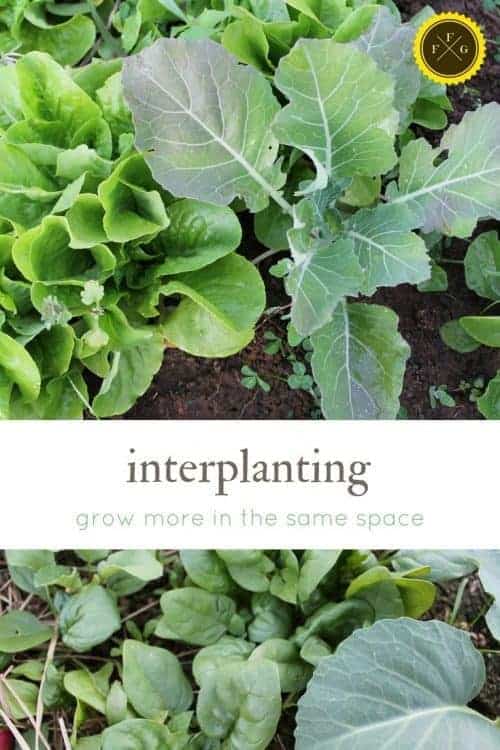
When I’m garden planning I no longer plan for specific beds to be salad crops, radishes, spinach, baby turnips and baby greens for this very reason.
My ‘go to’ garden beds for these crops is to inter-plant them around my summer crops that I usually transplant into the garden. You can have a whole bed of tomatoes, squash or peppers that take a 1-2 months before they need more space to grow, you might as well grow spinach, radishes and baby greens before then. I show an example of this in my 3 season garden design post.
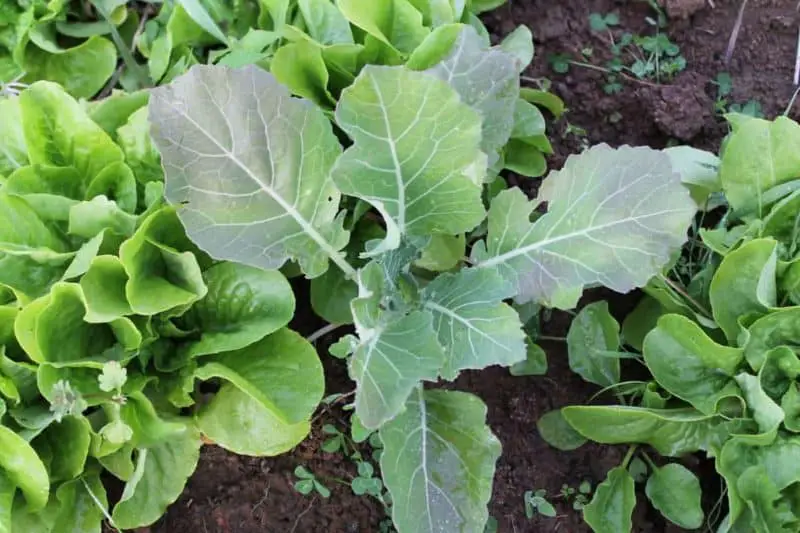
Ways to reduce garden weeds and get more crops from your garden space are:
- Growing a ‘pre or post’ crop to your main season crops with bumper crops
- Growing Permaculture Polyculture beds
- Interplanting
Interplanting Vegetables Problems
Interplanting vegetables won’t work unless you’re sowing the fast growing crops.
You can sow spinach, arugula, leafy lettuce and radishes almost anywhere you see some space in-between larger plants that need another 1-2 months to grow larger.
Some of the fastest veggies to grow that are ready in 30-45 days (the approximate time needed before the larger plants need the space)
Fast Growing Crops for Interplanting
- Radishes
- Leaf Lettuce
- Mustard Greens (komatsuna, mizuna, mibuna, tat soi, giant red… just to name a few)
- Toy Bok Choi
- Baby Turnips (hakurei is a fav)
- Baby Kale Greens
- Arugula
- Spinach

Conclusion
Take some time to observe your larger plants in the spring and early summer to know your available window and spacing for inter-planting. Experiment with varieties and timing for your location.

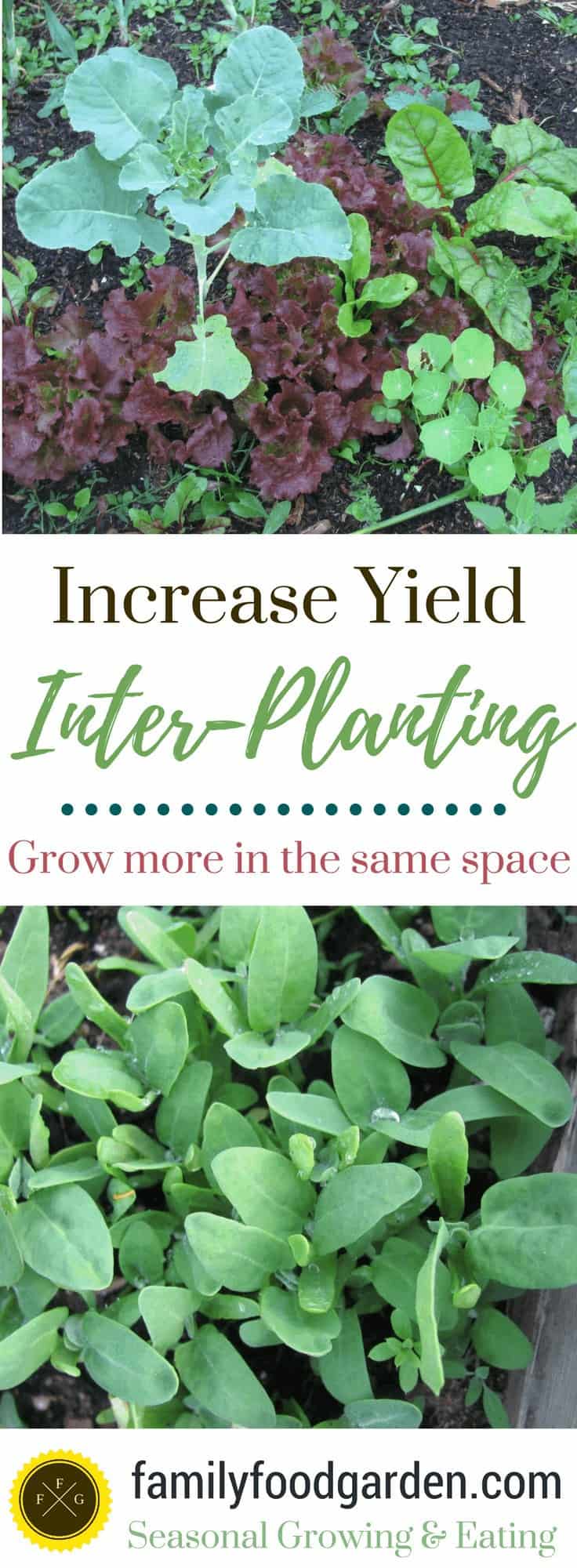
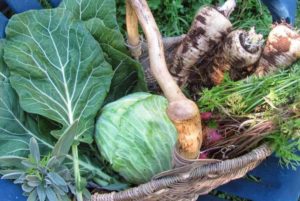

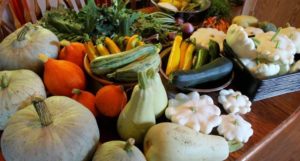
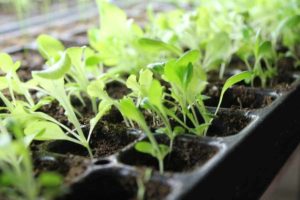
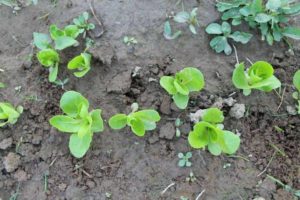
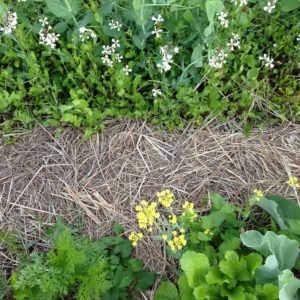
You say you grow corn in blocks. What do you mean?
Corn is wind pollinated so when you grow them in rows they don’t always get pollinated adequately. If you grow them in 4+ rows as your width then you have good pollination 🙂
The extra food you get from this is great, but to me, the real bonus is less weeds!! Once you stop planting by the instructions on the packet, you can fit literally fit a ton more of food in!
This is a great reminder. Thank you!
I feel like my summer weather in zone 10 might be too hot for leafy greens. Do you have any other suggestions for inter/underplanting? Thank you!!
Sweet potato vines would be great inter-planted with taller veggies that you’d harvest before your sweet potatoes (later in the season). I enjoy adding nasturtiums vines around plants, other flowers like marigolds work great too. (the flowers are edible and both are great for companion planting pest deterrence).
I follow the square foot gardening method in raised beds.. if I want to interplant lettuce, per say, around a tomato plant, do I just follow the square foot spacing for lettuce as if the tomato wasn’t there? Or do I need to leave more space? Thanks!
No one replied?!? I have this question too. Right now I treat the tomato plant like it was one of the lettuce plants if that makes sense.
I am going to put in as bed of early strawberries amongst my two rows of summer raspberries. Thanks for the nice presentation!
Strawberries and raspberries do not do well together. They are not companions
Plant strawberries among asparagus. Both are perennials.
This is one of the best blogs I have read on this topic.
What taller veggies can you interplant with sweet potato vines? It is my first time trying to grow them. Thank you for the information